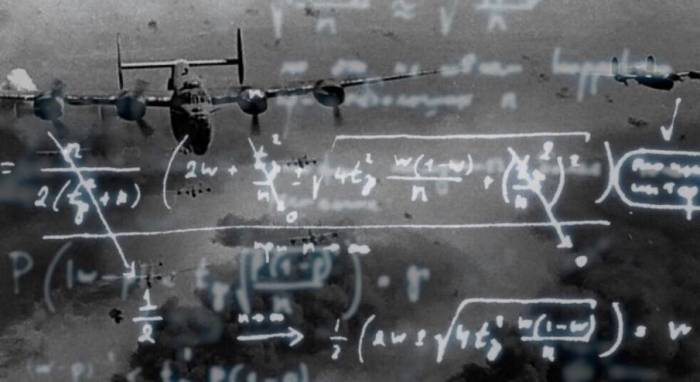Such was the unassuming story of Abraham Wald, who not only saved countless lives throughout World War II, but helped establish “survivorship bias” as an integral aspect of operational analysis both in a military setting and beyond.
Wald was born in Austria-Hungary (present day Romania) in 1902. By 1931, he had completed his PhD in mathematics, and despite possessing a gifted analytical mind, he was unable to secure a position at any of his home nation’s universities upon his return. The problem? It was 1931, and Wald was Jewish.
When the Nazis invaded Austria in 1938, Wald and his family fled to the United States where he was offered a position with the Cowles Research Commission in Economics. However, it wasn’t long before he found himself working for Uncle Sam, using his mathematical skills to help devise better strategies in the war against the same nation he had once fled: Germany.
Ward soon made a name for himself as a member of America’s Statistical Research Group (SRG), though ironically, he was still considered a “potentially hostile immigrant” or “enemy alien.” Wald, as a result, wasn’t authorized to look at the classified calculations he was writing for the American government himself, and his secretaries often joked that their task was to remove the notebook pages from Wald’s hands immediately after he finished writing them – for the sake of national security.
Wald’s most notable contribution to the war effort, or perhaps the simplest to explain, came in the form of his work on survivorship bias in American heavy bombers flying in the campaign over Europe. Wald found himself tasked with finding a way to increase aircraft survivability without compromising its flight range or maneuverability by covering the entire aircraft in heavy armor plating.
Wald’s problem was simple: if you can only apply armor to certain parts of the aircraft, where do you apply it?
He and the Allied forces began by gathering data. They looked at returning B-29 bombers and made note of where they had taken fire. They observed and noted as bombers continued to limp back to air bases throughout Europe, fuselages riddled with holes, with some even described as “swiss cheese.” In fact, based on the data they compiled, American bombers were taking fire in the fuselage at nearly twice the rate they had been taking rounds to the engine platforms. The rest of the plane, including wings, saw even more fire than the fuselage, and even the fuel systems were more commonly hit than the aircraft’s engines.
The decision seemed simple, according to senior defense officials: apply the armor to the fuselage. Aside from the wings, the fuselage was taking more damage than any other part of the aircraft, and unlike the wings, it housed integral equipment as well as the crew. Adding protection the heavily assaulted crew compartment just seemed logical.
It was also wrong, and Wald knew why. He explained to the Defense Department that the proper thing to do was to apply the additional armor to the places bullet holes weren’t, rather than the places a high number of bullet holes were recorded. Why? Because the data had been compiled by survivor aircraft, and therefore represented the opposite end of the data pool, in terms of the problem at hand.
Wald surmised that the aircraft data was collected from had managed to successfully return to allied air strips in order to be tallied for the study. That meant that they could sustain heavy fire in places like the wings and fuselage and remain airborne, as the data seemed to indicate. However, very few aircraft returned with damage to their engines – that wasn’t because so few aircraft had taken fire there… it was because most of the aircraft that were hit in the engines simply never made it back to be tallied.
Wald’s recommendations were swiftly adopted, and the basic premise is still employed in armoring American military aircraft to this day. It may be impossible to know how many aviator’s lives were saved thanks to Abraham Wald’s academic approach to war fighting, nor could we ever know how many objectives, essential to American national security, were successfully achieved thanks to keeping U.S. Aircraft airborne under enemy fire.
One thing, however, is certain: war efforts do require the sort of heroism we all enjoy seeing on the big screen and reading about in books, but more often than not, victory comes only by leveraging a combination of all that guts and glory along with a concerted, academic effort, sitting around a table covered in notebook pages in a dimly lit office building. Wald and his fellow mathematicians may have fought their war in a different way than many others, but their fight was no less integral.
Heroes may get the glory, but often, it’s the nerds that kept them alive long enough to bask in it.
Alex Hollings served as an active duty Marine for six and a half years before being medically retired from service. As an athlete, Hollings has raced exotic cars, played Marine Corps football and college rugby, fought in cages, and even wrestled alligators. As a scholar, he has earned a master’s degree in Communications from Southern New Hampshire University, as well as undergraduate degrees in Corporate and Organizational Communications and Business Management.
Read the original article on sofrep.com.
More about: military
















































